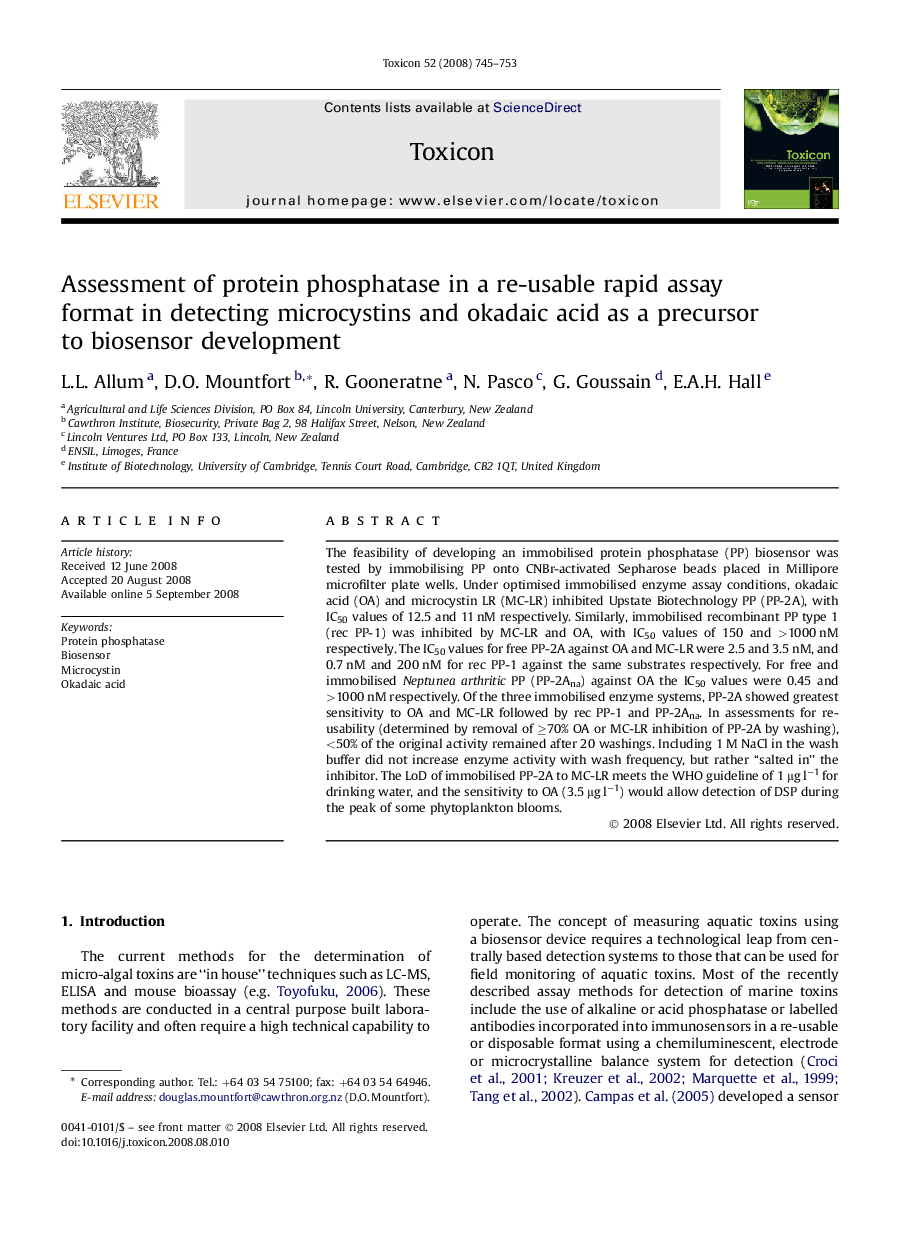| Article ID | Journal | Published Year | Pages | File Type |
|---|---|---|---|---|
| 2065384 | Toxicon | 2008 | 9 Pages |
The feasibility of developing an immobilised protein phosphatase (PP) biosensor was tested by immobilising PP onto CNBr-activated Sepharose beads placed in Millipore microfilter plate wells. Under optimised immobilised enzyme assay conditions, okadaic acid (OA) and microcystin LR (MC-LR) inhibited Upstate Biotechnology PP (PP-2A), with IC50 values of 12.5 and 11 nM respectively. Similarly, immobilised recombinant PP type 1 (rec PP-1) was inhibited by MC-LR and OA, with IC50 values of 150 and >1000 nM respectively. The IC50 values for free PP-2A against OA and MC-LR were 2.5 and 3.5 nM, and 0.7 nM and 200 nM for rec PP-1 against the same substrates respectively. For free and immobilised Neptunea arthritic PP (PP-2Ana) against OA the IC50 values were 0.45 and >1000 nM respectively. Of the three immobilised enzyme systems, PP-2A showed greatest sensitivity to OA and MC-LR followed by rec PP-1 and PP-2Ana. In assessments for re-usability (determined by removal of ≥70% OA or MC-LR inhibition of PP-2A by washing), <50% of the original activity remained after 20 washings. Including 1 M NaCl in the wash buffer did not increase enzyme activity with wash frequency, but rather “salted in” the inhibitor. The LoD of immobilised PP-2A to MC-LR meets the WHO guideline of 1 μg l−1 for drinking water, and the sensitivity to OA (3.5 μg l−1) would allow detection of DSP during the peak of some phytoplankton blooms.
